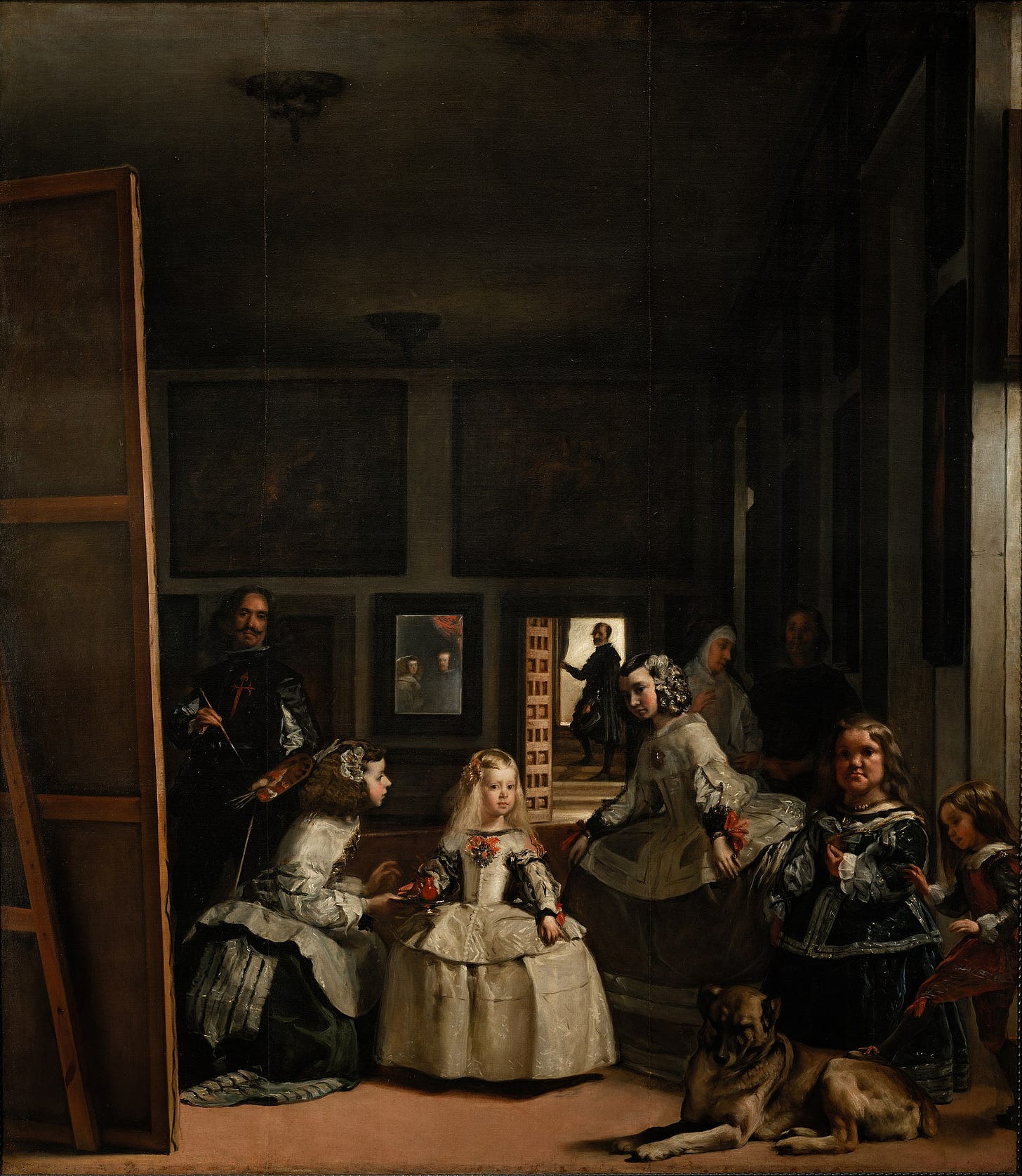
Most great European capitals I’ve either been to — Rome, Paris, Berlin, Vienna, Prague, Stockholm, Amsterdam, Copenhagen, Athens, Istanbul1 — or I at least have a good idea of what they stand for, as in the case of London, Moscow, or Brussels.2 But there is one in that category that I knew almost nothing about until a few days ago when I reached it by high-speed train from the great-city-but-not-quite-capital of Barcelona. I am talking about Madrid.
It is strange how little I have ever thought about Madrid. By all accounts it is a major city: the second-largest in the European Union, both by municipal limits and metropolitan area, and the economic engine and government seat of one of the bigger European countries. It is also in some sense a civilizational center, the core of the immense Spanish-speaking world, second only to the Sinosphere when counting the native speaking population. Madrid has world-class museums and restaurants. It is sprawling and dense; it is a transportation hub, with trains radiating all over the Iberian peninsula. It is one of very few cities in which a king still resides. Its heritage is rich, although, unlike many European cities, it does not extend that far into the past — the history of Madrid as an important place only starts around 1561 when it was picked as the capital by Philip II, mostly for its location in the middle of the kingdom. Still, the kings of Spain went on to live there for centuries — and from there they controlled immenses swathes of Europe and the Americas. Philip IV, depicted in the mirror at the center of the Meninas painting, itself a crowning cultural achievement for Madrid, was nicknamed “the Planet King.”
Yet before last week I knew next to nothing of the city, and didn’t ever really plan to visit, except that we spontaneously decided to go to Barcelona thanks to cheap flights, and I thought, since I’ve been there twice already, why not take this opportunity to travel to the capital and see what actual Spain is like.3
Now that I have left, I ponder my impressions of the city. They match my utter lack of expectations. Madrid is nice in the same way that Toronto is nice. There’s lots to do, the city is beautiful and lively, but almost nothing is that memorable. The two exceptions were, fittingly, the two most hyped up tourist attractions: the Museo del Prado, which has a legitimately impressive art collection, and the palace-monastery of El Escorial in a nearby town, where I saw the tombs of most kings of Spain, including everyone’s favorite ugly and tragic inbred Habsburg king, Charles II.
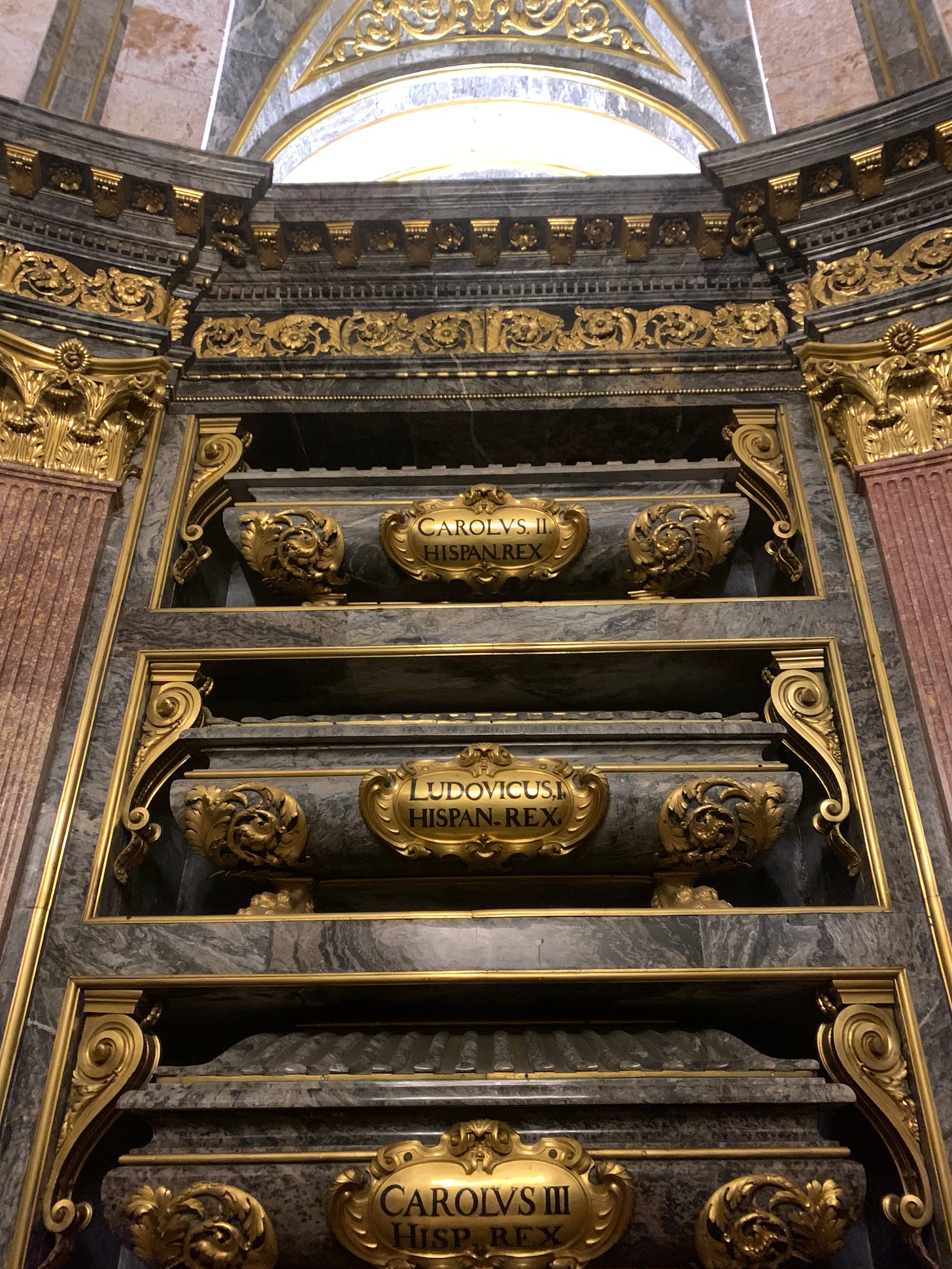
Other than those two things (and maybe the painting Guernica by Picasso, though I wasn’t all that impressed), everything else gave off the vibe of a nice, large, competent European city, but nothing beyond that.
I’ve been puzzling over this paradox. Why is Madrid, the former seat of the first globe-spanning empire, so normal? The closest thing I have to an answer is that it lacks an iconic monument. Think about almost any of the European capitals I enumerated above. Immediately you’ll see at least one famous structure in your head — the Coliseum, Hagia Sophia, the Eiffel Tower, Big Ben.4 Even a non-capital like Barcelona has the utopian, almost impossible Sagrada Família and the other crazy buildings by Gaudí. Even a boring large North American city like Toronto has its boring but recognizable CN Tower. Madrid has plenty of beautiful palaces, plazas, parks, and statues, but nothing that manages to serve as an anchor for memory. Nothing that allows its residents and visitors to reduce the sprawling complexity of a city, with its millions of interlinked people and buildings and institutions, into a single image that can easily be held in a brain.
That may be an answer but it sounds like a dumb one. Surely monuments can’t be that important? Surely they matter a lot less than, well, everything else, from clean water to an efficient transit system to a vibrant nightlife?
Yes, but only in the same way that self-actualization is “less important” than food and safety in the more or less fake Maslow hierarchy of needs.

It’s not that you need food and safety while self-actualization is optional — it’s that if you have none of those, you should start with food and safety, otherwise you’ll die. Once it’s clear that you won’t die, you can work on the upper echelons of the pyramid / triangle/ hierarchy / whatever. A city, to be great, needs to provide clean water and efficient transit and a vibrant nightlife5 — but if it stops short of creating structures that become recognizable around the world, then it doesn’t reach true greatness.
This is fine; not all places need to be great. In fact that may not matter much outside of tourism, which, while a much more wholesome activity than people like to pretend, doesn’t necessarily need to be a city’s top priority. (Although I should mention that this argument doesn’t sit well with my story about Madrid — which actually gets lots of tourism!)
Assuming the monument argument is true, we still have to answer the question of why Madrid failed to get at least one. I can only hazard guesses.
Maybe it is just the dumb luck of human talent distribution — an architectural genius like Gaudí could have been born in Madrid, but happened to be a Catalan instead.
Maybe the Spanish Empire peaked at the wrong time, somehow; a time of great literary and artistic production, hence the masterpieces by Cervantes and Velázquez, but not a particularly memorable period for architecture. The royal monastery of El Escorial, emblematic of Spanish 16th-century architecture, did cast a surprisingly austere atmosphere.
Maybe, and here I want to be careful because I am going to suggest one of those broad cultural arguments that are usually false, maybe it’s something about Hispanic culture not being in love with the idea of monuments. The great capitals of Spanish America don’t boast that many iconic buildings, either.
Maybe what counts as an iconic monument is also, itself, very random, subject to the whims and fashions of cultural influencers across the centuries, and Madrid has just not drawn a strong hand there.
And maybe my monument argument is nonsense, or has its causality reversed — monuments might become iconic after their home cities have achieved greatness, and for some reason Madrid just never quite did become great despite everything.
In any case, I am glad I visited Madrid. It is perhaps a bit sad that I was even gladder to go back to Barcelona right after, for what was technically the fourth time, while I don’t expect to be in the Spanish capital ever again. But hopefully that doesn’t matter to the Madrileños. They seemed happy, from my superficial vantage point. Their city really does seem like a nice place to live. Maybe, in some sense, it’s better for a city to not even aim for greatness, and achieve it, if it must, only through time and random chance.
Not a capital anymore, but was one for a long time, and is certainly great
Then there are many European capitals that I wouldn’t call great, some of which I visited too, like Reykjavik, Oslo, Tallinn, and Bratislava.
As a sympathizer of Catalan independence I have a reticence to see Barcelona as actual Spain
Or the Pantheon and St Peter’s Basilica; the Blue Mosque; the Louvre and the Arc de Triomphe; the Tower Bridge and the London Eye — most great capitals have multiple iconic structures, which makes it even more puzzling why Madrid doesn’t have even one.






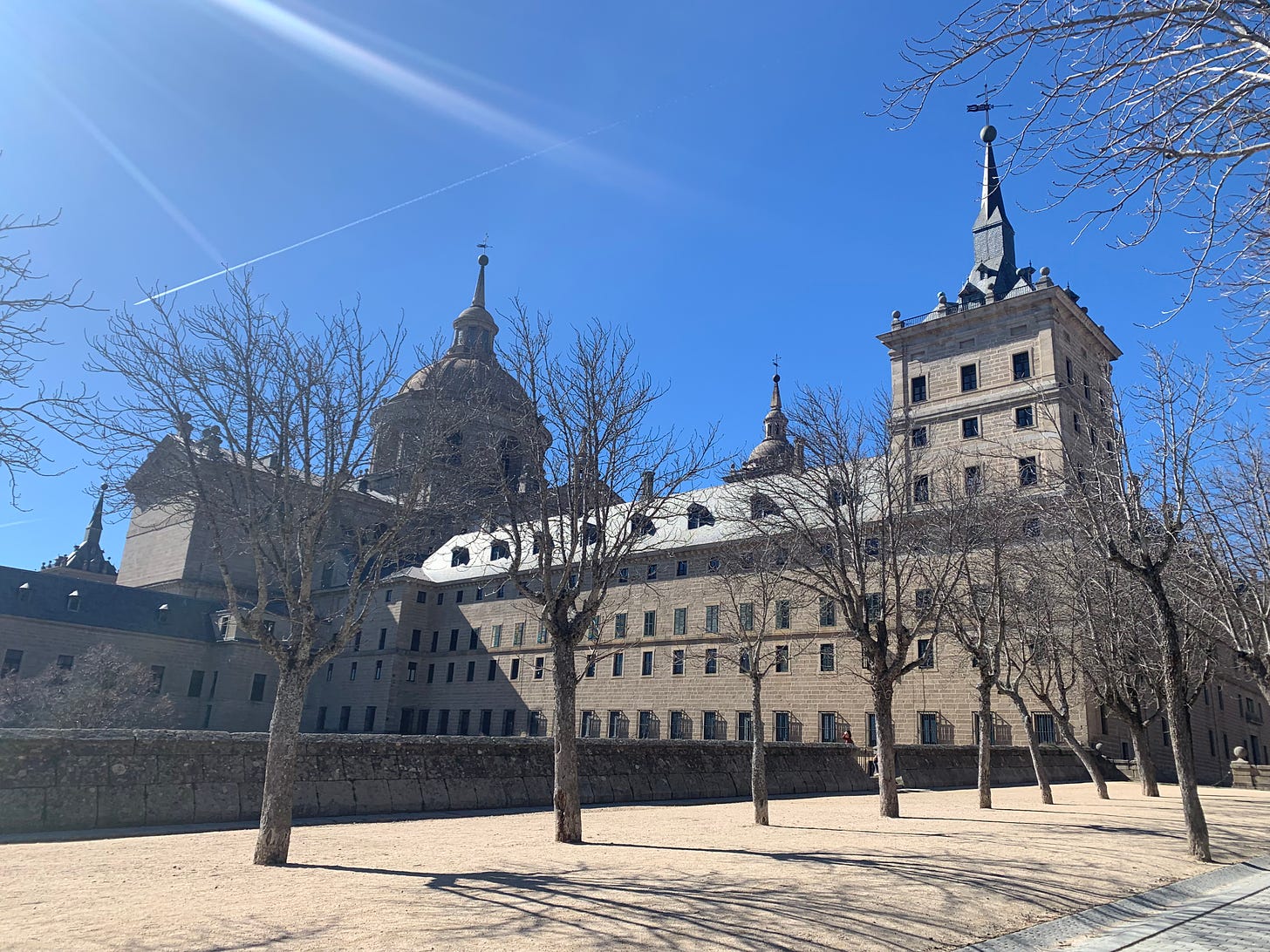
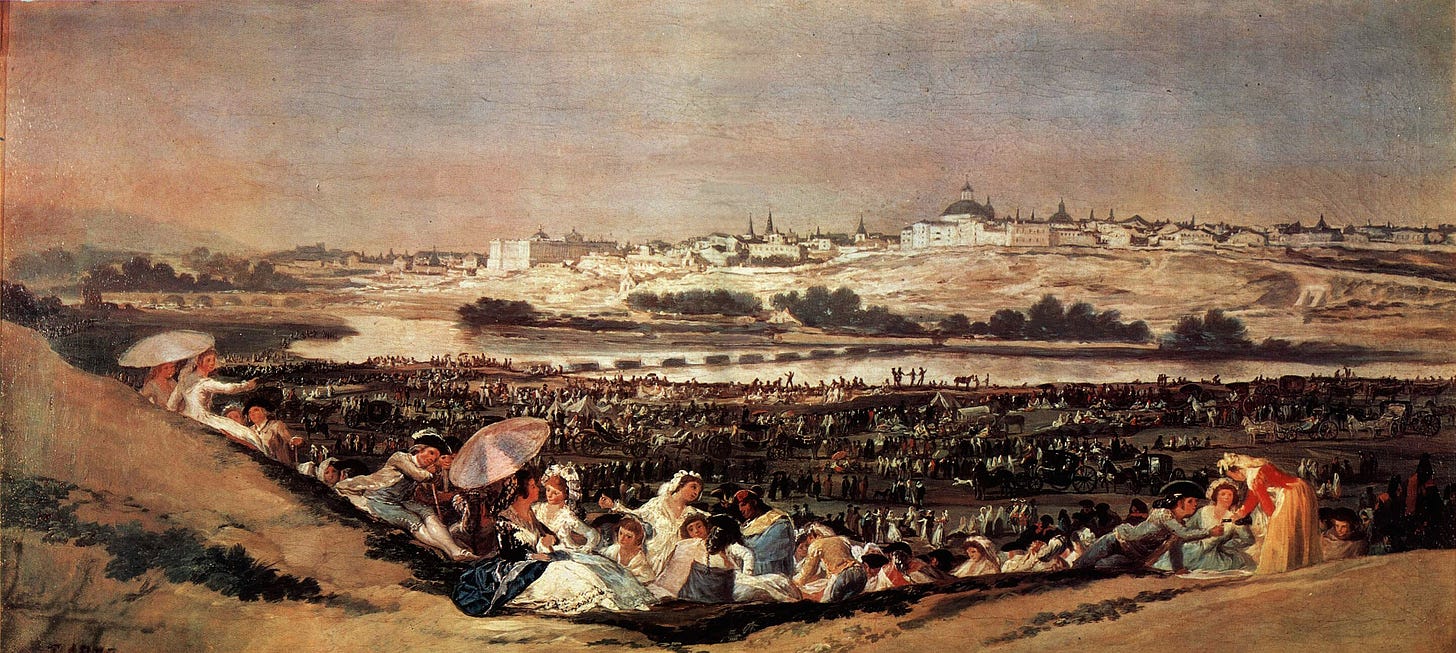
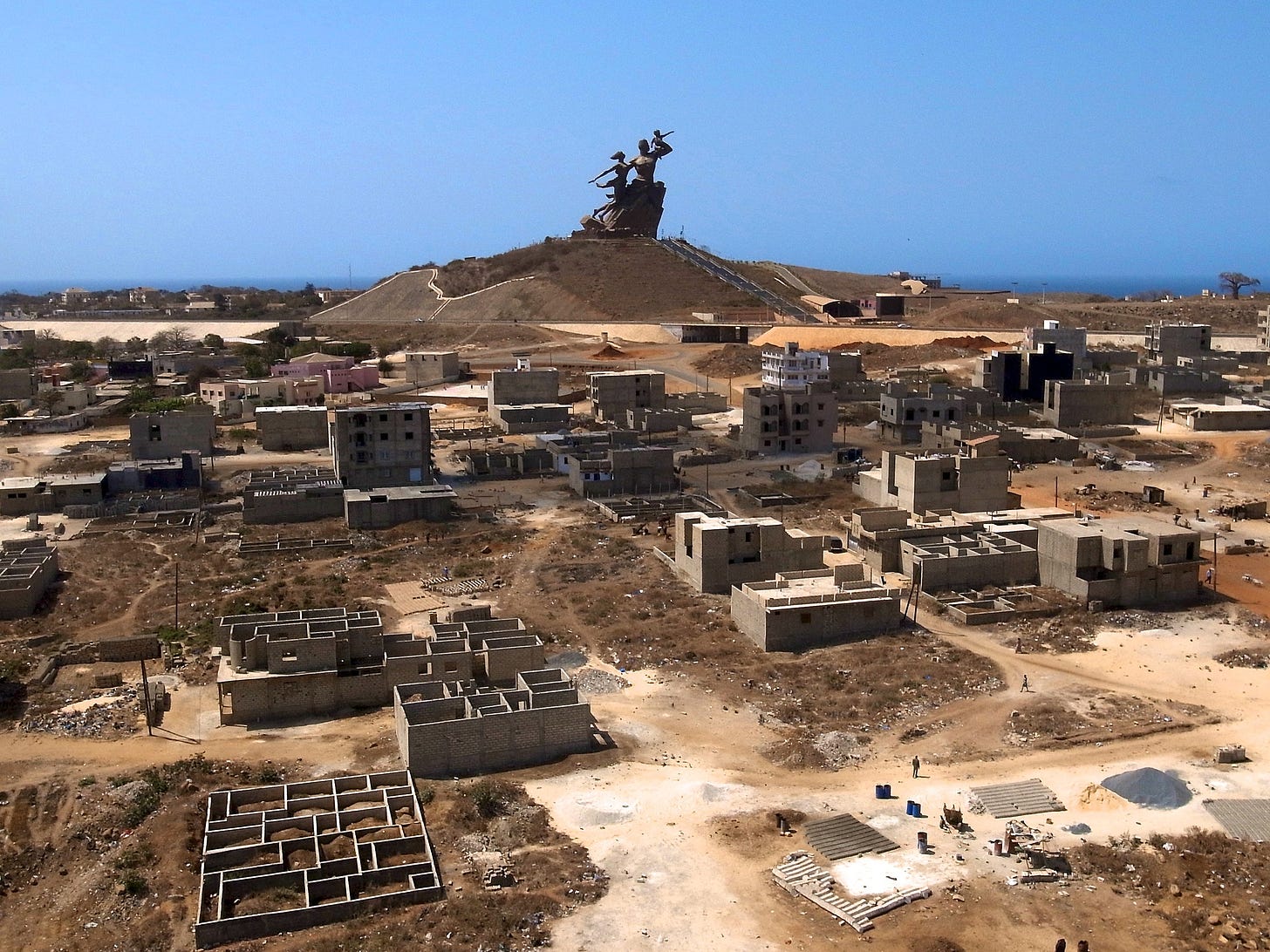
It is call a pyramid because of the image of the base of a building. It is represented as a triangle.
The triangle of Maslow would be more confusing, because usually triad and triangle represent a like between 3 things.
Étienne, I was in Madrid last December for 6 days, including for the parade on horses and high uniform in front of the Palacio Real on Spanish Constitution Day (accidental, I didn't know.) What I also didn't know was that Madrid was founded in the late 9th century (from 852 to 886) as a citadel erected on behalf of Muhammad I, the Cordobese emir, on the relatively steep left bank of the Manzanares. It was a military outpost for the quartering of troops. You can read more about it here - https://en.wikipedia.org/wiki/History_of_Madrid
Today, of the buildings and works of that civilization there remains only a piece of a wall and a closed off area downhill from the Cathedral and Palacio Real. I took a photo of it from outside as it was closed when we went. I found there were too many reference points, but none significant enough to 'feel' unique. We spent 4 hours in the Prado - Goya! - but also loved (in a strange way) the two hours we walked around El Retiro Park with the lake and the Monument to King Alfonso XII.
But I was most disappointed by the food in Madrid. In fact, I repaired to Italian restaurants in Valencia and it was only Barcelona where I felt some 'culture' live.